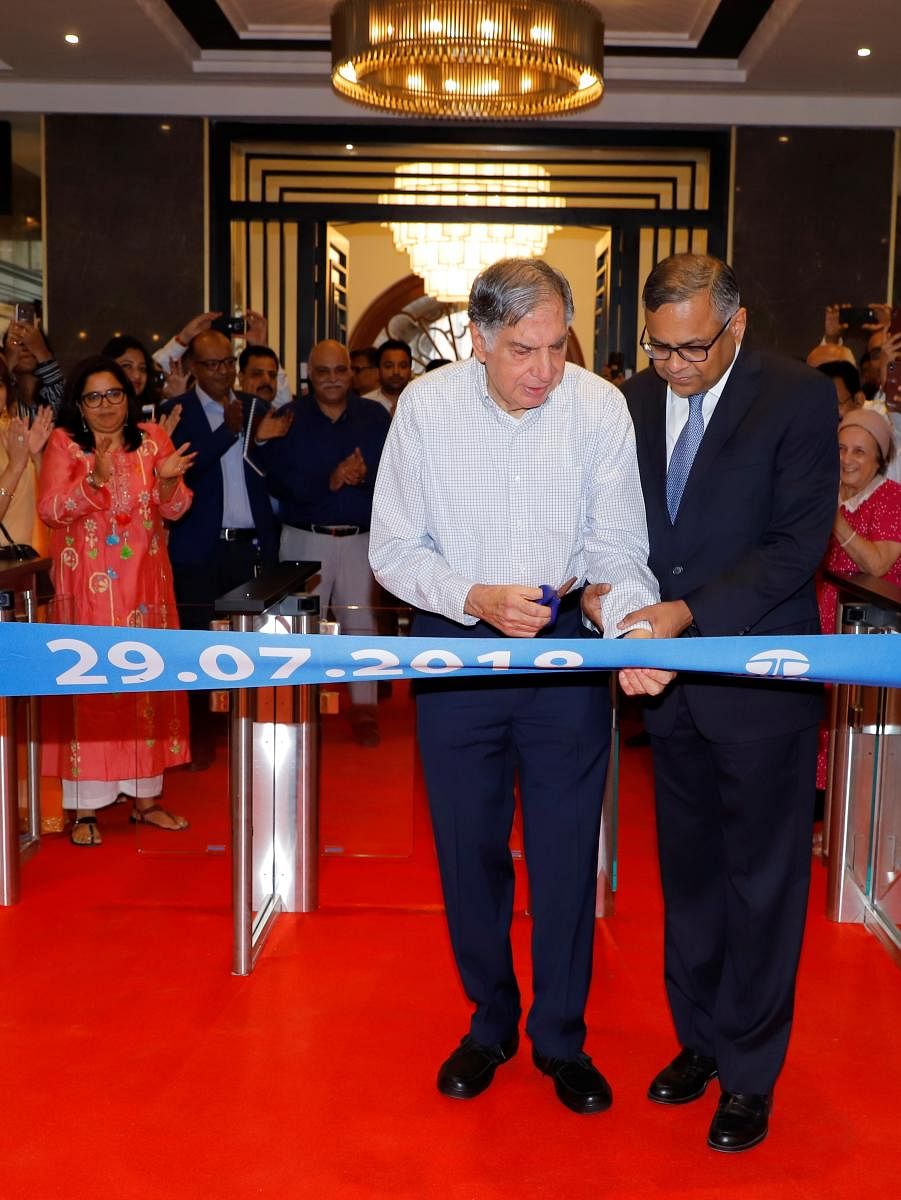
Marking the 114th birth anniversary of its former chairman, JRD Tata, the Tata Group has re-opened Bombay House, its global headquarters in Mumbai. Built in 1924, the 94-year-old heritage building has undergone refurbishment and restoration for the first time in its history.
Ratan N Tata, Chairman Emeritus, Tata Sons, inaugurated the iconic building in the presence of N Chandrasekaran, Chairman, Tata Sons and other Tata employees after a 9-month-long restoration process.
The fresh look, both in terms of aesthetics and functionalities, reflects the changing workplace at the Tata Group – open, agile, future-focused and yet deeply connected to its rich heritage, the company said in a statement.
Chandrasekaran said, “It’s a historic occasion and a great tribute to reopen the new Bombay House on JRD Tata birth anniversary. The renovation of this 94-year-old heritage building, the first in its history, has revolved around designing for the employees a more modern, collaborative and informal workplace equipped with the best of technologies and security systems."
Each floor has been designed with agile workspaces and semi-formal collaboration zones for teams to work together. Enhanced natural lighting, and the paintings, photographs and art installations that adorn the walls have created a vibrant environment for employees and visitors.
In a first for Bombay House, a kennel has been created for the canine friends who have been an integral part of the building for decades. The four floors of the building house offices of major Tata organisations. The historic boardroom on the fourth floor has been restored to its original beauty with only technology being a new addition.
The new technology set up in the building has been designed to create digital workplaces with seamless integration. Each floor has digital meeting rooms with immersive technology to enable seamless collaboration.
Bombay House was built on the two plots of land bought by Sir Dorabji Tata, the group’s second Chairman and Jamsetji Tata’s elder son, from the Bombay Municipality in 1920. The building was designed by the well-known architect, George Wittet, who was also the architect of the Gateway of India, the Prince of Wales Museum (now called Chhatrapati Shivaji Maharaj Vastu Sangrahalaya) and other iconic buildings of Mumbai.